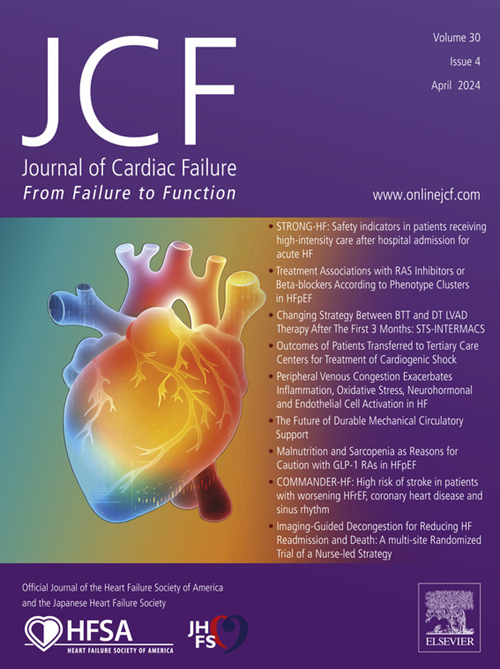Impact Of HF Etiology On The Sustainability Of Favorable Response After LVAD Weaning: A VAD Wean Registry Analysis
IF 6.7
2区 医学
Q1 CARDIAC & CARDIOVASCULAR SYSTEMS
引用次数: 0
Abstract
Introduction
A subset of HF patients can experience significant improvement of their cardiac structure and function while on LVAD support.
Hypothesis
We sought to investigate the impact of HF etiology on the durability of cardiac improvement and favorable outcomes after LVAD weaning.
Methods
We studied 324 HF patients enrolled in the international multicenter VAD Wean Registry who received a durable continuous-flow LVAD and underwent device support weaning (Figure Panel A). Indications for VAD weaning included: structural/functional cardiac improvement meeting institutional criteria for “myocardial recovery” (responders) or LVAD-related complications accompanied by variable degrees of cardiac improvement (partial responders). Patients were divided into seven categories based on HF etiology: ischemic cardiomyopathy (CM) (n=30), post-myocarditis CM (n=65), peripartum CM (n=53), valvular CM (n=12), chemotherapy-induced CM (n=14) and idiopathic CM (n=150). The primary outcome was 2-year survival free of transplant or LVAD re-implantation. The secondary outcome was the LVEF, measured by echocardiography at 3, 6, 12 and 24 months post-LVAD weaning.
Results
Patients with idiopathic, peripartum and post-myocarditis CM had higher rate of 2-year survival free of transplant or LVAD re-implantation compared to patients with chemotherapy-induced CM (Figure-Panel B) (p-values: 0.009, 0.004, 0.001, respectively). Patients with post-myocarditis CM were also more likely to achieve the primary outcome compared to those with ischemic CM (ICM) (p-value, 0.009). The LVEF changes over time are depicted in the Figure-Panel C and detailed in the Table.
Conclusions
In this multicenter analysis the etiology of HF appears to impact the durability of favorable response after LVAD weaning. The degree of reverse remodeling achieved before VAD weaning and its impact on the durability of response in different HF etiologies warrants further investigation in studies with larger patient population and power.
求助全文
约1分钟内获得全文
求助全文
来源期刊

Journal of Cardiac Failure
医学-心血管系统
CiteScore
7.80
自引率
8.30%
发文量
653
审稿时长
21 days
期刊介绍:
Journal of Cardiac Failure publishes original, peer-reviewed communications of scientific excellence and review articles on clinical research, basic human studies, animal studies, and bench research with potential clinical applications to heart failure - pathogenesis, etiology, epidemiology, pathophysiological mechanisms, assessment, prevention, and treatment.
 求助内容:
求助内容: 应助结果提醒方式:
应助结果提醒方式:


